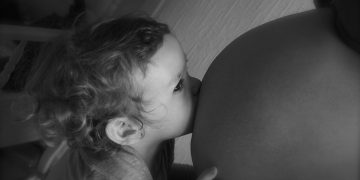Toddlerhood is a time of incredible growth—and just as much unpredictability. Between the ages of one and three, children are rapidly developing physically, emotionally, and cognitively. But with this growth often come intense emotional reactions, mood swings, and boundary-testing behaviors. These are commonly referred to as toddler challenging behaviors. While these behaviors can be overwhelming for parents and caregivers, they are a normal part of child development. Understanding what’s behind the turbulence is the first step to navigating it with confidence and compassion.
Common Toddler Challenging Behaviors
Every toddler is unique, but certain behaviors tend to show up across the board. Some of the most common toddler challenging behaviors include:
Tantrums and emotional outbursts: Sudden crying, screaming, or lying on the floor.
Hitting, biting, and kicking: Physical aggression toward peers, parents, or caregivers.
Refusing to cooperate: Saying “no” to everything or ignoring simple instructions.
Whining and screaming: Vocal protests, often in public places or when denied something.
Struggles during routines: Resistance at bedtime, mealtime, or when transitioning activities.
Recognizing these behaviors as typical—though frustrating—can help you respond with more empathy and strategy.
What Causes Toddler Challenging Behaviors?
Understanding the root of toddler challenging behaviors can ease a lot of tension. These actions aren’t about being “bad”—they’re a result of developmental limitations. Here are some common causes:
Emotional development: Toddlers are still learning to identify and manage feelings. Without words to express themselves, they act out.
Communication struggles: Limited vocabulary can lead to frustration and tantrums.
Seeking independence: Saying “no” or resisting help is a toddler’s way of exploring autonomy.
Overstimulation or fatigue: Too much noise, activity, or lack of sleep can make little ones more prone to meltdowns.
Changes in routine: New environments, schedules, or caregivers can trigger behavior shifts.
How to Respond Effectively
The way you respond to toddler challenging behaviors can either diffuse or escalate the situation. Here are some calm and effective strategies:
Stay consistent and calm: Your reaction sets the tone. Avoid yelling or reacting with frustration.
Use simple language: Toddlers respond best to clear, brief instructions.
Offer choices: Giving options (like which shirt to wear) fosters cooperation.
Redirect behavior: If your toddler is climbing on furniture, guide them to a safer activity instead of scolding.
Reinforce positive behavior: Praise good behavior frequently to encourage more of it.
Remember, discipline doesn’t mean punishment—it means teaching.
Discipline Strategies That Work

Discipline is most effective when it teaches, not punishes. When handling toddler challenging behaviors, focus on approaches that build understanding and self-regulation:
Time-ins instead of time-outs: Sit with your child and help them process their emotions.
Use logical consequences: If a toy is thrown, the toy is put away temporarily.
Model desired behavior: Show your child how to use gentle hands or calming words.
Encourage emotional expression: Teach phrases like “I’m mad” or “I need help” to reduce acting out.
Create predictable routines: Toddlers thrive on structure. Predictability helps them feel secure and in control.
These discipline tools help your child build lifelong emotional skills—and give you more peace in the process.
When to Be Concerned
While most toddler challenging behaviors are a normal part of development, there are times when extra attention may be needed. If your toddler’s behavior is extreme, persistent, or seems to interfere with daily life, consider the following red flags:
Frequent, intense aggression that doesn’t improve with guidance
Lack of eye contact or social engagement with others
Delayed speech or trouble understanding simple instructions
Extreme resistance to transitions or changes in routine
Self-harming behaviors like head-banging
In these cases, it’s wise to consult a pediatrician, child psychologist, or early intervention specialist. Getting support early can make a big difference in your child’s emotional and developmental growth.
Supporting Positive Behavior Growth

The best way to manage toddler challenging behaviors is to focus on building positive ones. Support your child’s development with strategies that promote emotional intelligence, independence, and trust:
Play intentionally: Play is how toddlers learn. Use it to model empathy, turn-taking, and problem-solving.
Create structure: A consistent routine helps toddlers feel secure and reduces behavior triggers.
Teach feelings: Label emotions during daily moments—“You’re frustrated because you can’t reach that.”
Offer praise: Catch them being good and say it aloud—“You waited so patiently!”
Encourage independence: Let them do age-appropriate tasks like putting on shoes or helping with clean-up.
These actions help toddlers build self-control and reduce the frequency of negative behavior.
Real-Life Scenarios and Solutions
Here are a few everyday examples of toddler challenging behaviors—and how to handle them calmly and effectively:
Grocery store meltdown: Acknowledge feelings (“You’re upset we can’t buy that”) and distract with a small task (“Can you help me find the apples?”).
Bedtime resistance: Keep a predictable bedtime routine with calming activities like reading or soft music.
Fighting with siblings: Intervene calmly, describe the issue, and guide both toddlers toward using words instead of hands.
Not leaving the park: Give a countdown (“5 more minutes”) and offer a choice (“Walk to the car or hop like a bunny?”).
Being prepared with a calm response helps turn chaos into a teachable moment.
Tips for Parents and Caregivers
Dealing with toddler challenging behaviors can be exhausting—but you don’t have to do it alone. Here are a few reminders for caregivers:
Take care of yourself: You can’t pour from an empty cup. Rest, ask for help, and do something that recharges you.
Stay consistent: Clear boundaries reduce confusion and anxiety for toddlers.
Use a calm voice and body language: Your child mirrors your energy.
Join parenting groups: Whether online or in-person, shared experiences provide support and ideas.
Keep learning: Read books, follow positive parenting educators, or consult professionals as needed.
You’re doing important work—progress happens with patience and persistence.
Conclusion
Toddler challenging behaviors are not a sign that you’re failing—they’re a sign that your child is growing. These early years are filled with emotional ups and downs, but with understanding, consistency, and love, you can guide your toddler through them. Every tantrum is a chance to teach, every boundary is a chance to connect, and every struggle is an opportunity to grow—together.







































